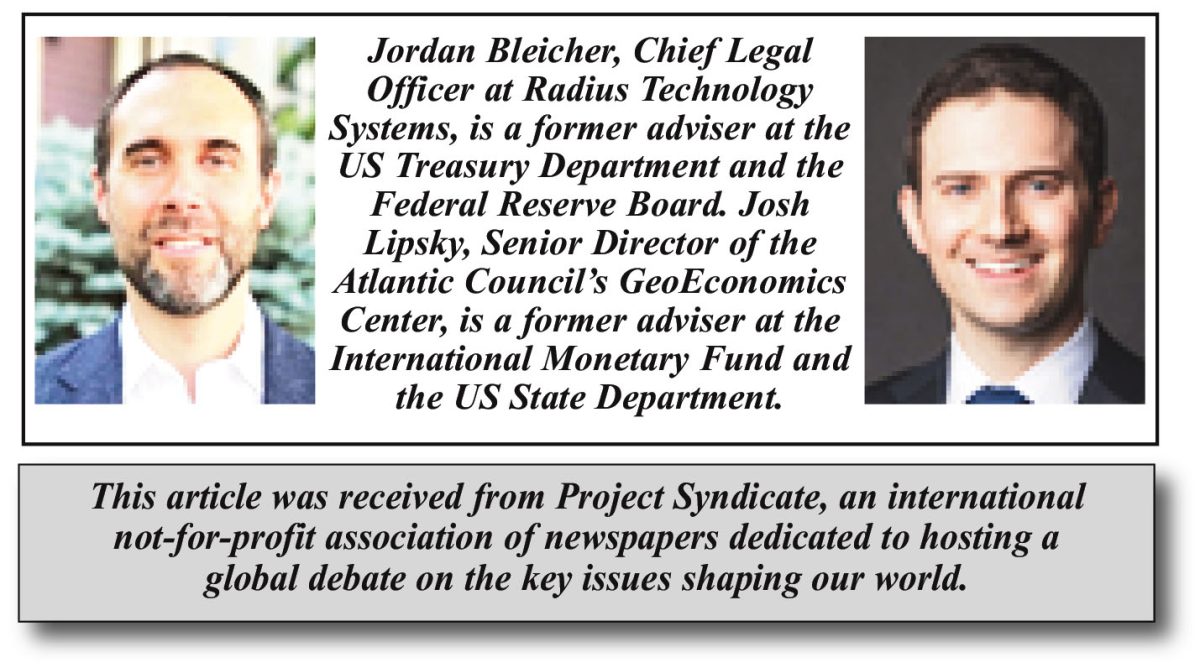CAMBRIDGE, MA/WASHINGTON, DC – In a 1955 speech to a group of investment bankers, then-US Federal Reserve Chair William McChesney Martin shared a story about an economics professor who always administered the same exam. When asked how any student could possibly fail such a test, the professor replied, “The questions don’t change, but the answers do.”
This story remains relevant today, and not just for Martin’s successors at the Fed. The ongoing debate about the health of the dollar is often framed in binary terms: either its status as a global reserve currency is rapidly eroding, owing to geopolitics and US fiscal policies, or it remains the unrivaled dominant currency with no competition in sight.
The reality is more complicated. While the dollar remains dominant in areas like trade finance and foreign-exchange, these may be lagging indicators of the dollar’s strength. Payment systems may be a more reliable sign of a currency’s likely position in the future. Central bankers liken payment systems to plumbing: you can turn on the water only after the pipes have been built. Once this infrastructure is in place, a shift in currencies’ status may occur faster than expected. Few predicted the transition from pound sterling to the dollar in the 1920s.
In recent years, countries have been actively improving their financial plumbing. Fast-payment systems have transformed the financial landscapes of countries like Brazil and India. Countries have also begun interlinking their financial infrastructure, enabling near-real-time settlement across national borders. Project mBridge connects central and commercial banks from China, Hong Kong, Thailand, and the United Arab Emirates without relying on the dollar. Saudi Arabia joined the project earlier this month, and several more countries are expected to do so this year.
Gita Gopinath, the International Monetary Fund’s First Deputy Managing Director and its most senior US official, recently attributed the increased use of the renminbi to China’s Cross-Border Interbank Payments System, which acts as a clearinghouse, similar to the US Clearing House Interbank Payments System. While many of these projects are relatively small compared to the overwhelming volume of dollar-based transactions, they should not be overlooked.
The increased interest in alternative financial architectures can be partly attributed to the perception that relying on Western systems is risky. Research by the Atlantic Council has identified a sharp increase in the number of countries exploring new payment technologies since the West imposed economic sanctions on Russia following its invasion of Ukraine.
Many of these projects are not mere clones of legacy systems; rather, they aim to make cross-border payments faster, cheaper, and more reliable. Over time, they could reduce demand for the dollar, increasing costs for US borrowers and making the United States more vulnerable to macroeconomic shocks.
The more immediate risk is that these new systems could undermine America’s national-security interests. Many new cross-border payment systems can facilitate transactions without the involvement of US banks, limiting the Treasury Department’s access to financial intelligence and eroding its ability to enforce sanctions. For years, governments and banks around the world have sought ways to bypass the dollar, often at great cost. Now, cutting-edge digital technologies could make this much cheaper.
In responding to these challenges, US policymakers’ top priority should be to ensure that future cross-border payment systems align with US values and interests, such as maintaining the global financial system’s stability. One way to pursue this objective is to advocate that new cross-border payment systems meet existing international standards.
But the US would likely have greater influence over these new payment systems if it were actively involved in developing, building, and operating them, as it was in establishing the SWIFT and Continuous Linked Settlement interbank payment systems.
Despite a slow start, America’s enormous incumbent advantage should enable it to catch up quickly. Correspondent banks in the US are the central nodes of cross-border payments, and America is home to some of the world’s largest and most sophisticated mobile-payment providers and fintech companies. Policymakers should communicate to the private sector that new cross-border payment solutions are a geopolitical imperative, and establish clear guidelines to support responsible innovation.
The Fed has a critical role to play in facilitating this shift. Central banks around the world – including the Bank of England, the European Central Bank, the Bank of Japan, and the Monetary Authority of Singapore – are driving payment innovation in their respective jurisdictions and globally. But the Fed’s lack of a clear vision makes it difficult for US allies and partners to coordinate effectively, thereby increasing the risk of a fragmented international financial system. And if the Fed fails to keep pace with technological innovation, central-bank money could play a diminished role in settlement processes, introducing financial-stability risks.
Given that the Fed has traditionally focused on improving the efficiency and integrity of payment systems, aligning itself with a particular administration’s geopolitical agenda, some may fear, could endanger its independence. But acknowledging the geopolitical implications of the Fed’s role does not require rewriting its mandate. To enable dollar users to transact as efficiently and securely as possible, both domestically and internationally, the Fed should support innovation and experimentation in payments, thereby helping to preserve the greenback’s global dominance, along with its economic and national-security benefits. This is not a new concept: one of the Fed’s original responsibilities a century ago was to ensure faster processing of checks.
Already, the Fed has taken several promising steps. In 2023, it launched a new fast-payment service called FedNow, which, if widely adopted, could be linked to other jurisdictions’ systems and enhance the dollar’s international appeal. Meanwhile, the New York Fed is participating – along with the Bank of Japan, the BOE, and four other central banks – in the Bank for International Settlements’ Project Agorá, which explores how emerging technologies like tokenization and shared ledgers could improve cross-border payments. While these initiatives are important, the Fed must act faster and more decisively, given the significant gap between proof-of-concept and implementation.
This July marks the 80th anniversary of the 1944 Bretton Woods conference, which took place while World War II was still raging. Recognizing the need to establish a new monetary order, the 44 participating countries were able to look beyond the immediate crisis and lay the groundwork for new international institutions and future financial innovations.
To maintain the dollar’s reserve-currency status and the benefits that the US government and financial institutions derive from it requires reviving the spirit of Bretton Woods. To paraphrase the economics professor from Martin’s story, while the questions have remained the same, it is time for new answers.
Copyright: Project Syndicate, 2024.










